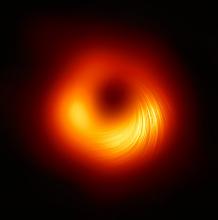Listen to today's episode of StarDate on the web the same day it airs in high-quality streaming audio without any extra ads or announcements. Choose a $8 one-month pass, or listen every day for a year for just $30.
You are here
Magnetic Blemishes
Stars produce their own “acne” — blemishes on the surface. It’s more common on young stars than old ones. In fact, astronomers can use the blemishes to help determine a star’s age.
The blemishes are called starspots. They’re magnetic storms that can span thousands or hundreds of thousands of miles. They’re up to a few thousand degrees cooler than the rest of the star, which makes them darker.
The Sun produces these storms as well — sunspots. On average, they cover only about three-hundredths of a percent of the surface of the Sun. But spots can mark much more of the surface of a young star — a quarter, a third, or more. That can make the star’s overall brightness dip by a small but measurable amount.
The difference is a result of the star’s age. When a star is born, it spins fast — in a few days or even hours. That generates a powerful magnetic field. And it’s the magnetic field that creates the starspots. Lines of magnetic force get tangled and twisted. Where those lines penetrate the surface of the star, they create spots. And when the lines snap, they can create outbursts that are thousands of times stronger than any we’ve seen from the Sun.
As a star ages, though, it slows down. Its magnetic “dynamo” gets weaker, so the number of spots goes down. So astronomers can get a pretty good idea of a star’s age by combining its rotation rate with the number of spots — the common “blemishes” of youth.
Script by Damond Benningfield






